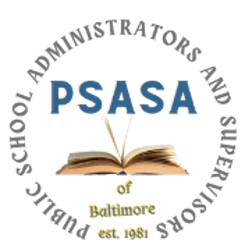By Ambika Kapur, program officer for education programs at the Carnegie Corporation of New York
Readers of Education Week took part in an informal survey this year in conjunction with the release of a Carnegie Corporation of New York challenge paper on key strategies for improving K–12 education in the United States. The participants were asked a single question: “How would you rate family engagement at your school or community?”
The results were eye-opening: of the almost 700 respondents, only 34% rated family engagement “good” or “excellent,” with 44% responding “fair” and another 11% judging it as poor.
The limited survey is telling, particularly given what we know about the impact of family engagement in our kids’ education. Research over the past decades consistently has confirmed that the active participation of families is one of the most powerful predictors of children’s development, educational attainment, and success in school and in life. This comes as no surprise for many of us—after all, kids spend only about 1,000 of their 6,000 waking hours per year in school.
For the rest of those 5,000 hours, students are learning in community centers and after-school programs, in local museums and science centers and, above all, in their homes—that is, if they are lucky enough to live in communities in which these resources are plentiful, robust and affordable for their families.
The children of families who cannot afford the time or money required to access learning and enrichment experiences outside of school face an “opportunity gap” that impacts their in-school achievement. According to the nonprofit organization ExpandED Schools, by 6th grade students from higher-income families will have logged 6,000 more hours of out-of-school learning opportunities than their peers from lower-income families.
The question that faces all of us—families, communities, educators, nonprofit organizations and philanthropic funders looking to find solutions to these challenges—is how to develop supportive and effective pathways for bringing families into their children’s education, while understanding that there will not be a one-size-fits-all solution. Differences in income, language, immigration status, race, parental education and myriad other factors mean that educators and parents will have to find the solutions that work best in their communities.
In our quest to better understand the best way forward, Carnegie Corporation of New York commissioned a challenge paper from Dr. Heather Weiss, co-director of the Global Family Research Project. The report (available for download) outlines several potential evidence-backed areas for development: increasing student attendance; ensuring families understand what their students’ grades actually mean; acknowledging the crucial role families play in their children’s academic and social development, and giving them the resources and support they need to fulfill that role; providing families with the tools and skills to use digital media to enhance their children’s education; and focusing in particular on transitional moments (say, in the shift from elementary to middle school, or middle to high school) as opportunities for reinforcing the continued need for family support.
One of the key takeaways from the challenge paper is that our path forward must involve working with families and communities to create opportunities for engagement that make sense, developing out of mutual trust and shared responsibility. In fact, what history tells us is that some of the most successful models of engagement were driven by families—even those in the lowest income brackets, with limited English language skills.
The Carnegie Corporation has been working with a variety of nonprofit organizations to come up with strategies that build on past research and successes to create lasting ties among communities, families and schools. These include:
Partnering with employers: The New Orleans-based EdNavigator partners with employers to bring personal education advisers into the workplace to meet with busy working families. By listening to what families hope their children will be able to achieve through their education, and giving them the tools and information they need to advocate for their children’s needs, EdNavigator empowers families to engage and drive change—acknowledging that “family engagement” needs to happen not just in schools, but in the places where families live and work, too.
Making home visits: The Flamboyan Foundation, based in Washington, D.C., helps local schools build mutual trust and understanding between teachers and families by facilitating in-home visits. This allows families to feel a sense of partnership with their children’s teachers and gives teachers a better understanding of the support their students are receiving at home. The foundation’s program includes training teachers in implicit bias, recognizing that family-teacher relationships often are influenced by unrecognized stereotypes and assumptions. Research commissioned by Flamboyan suggests that reading scores and attendance improve when families receive in-home visits from teachers.
Connecting through technology: In school districts nationwide, PowerMyLearning is using technology to connect educators and families. Students are given “family playlists” by their teachers—homework assignments in the language of their choice that prompt them to teach a family partner about what they are learning in class. The approach works on many levels: allowing students to master skills and concepts, creating structured opportunities for families to take part in their children’s learning, and opening up lines of communication between teachers and families through a phone application.
These approaches, as promising as they are, are only the start of a much longer process of building the kinds of family engagement that will strengthen our education system and, in turn, our communities.
It is the hope of Carnegie Corporation of New York that by supporting research and making information available to parents, educators and people interested in improving students’ academic experience and achievement, we will inform and inspire many of you to find strategies that work in your cities and towns.
To that end, we’ve launched a resource center where you can keep up to date with the latest research, hear from our nonprofit partners via a webinar, watch videos of successful family engagement models, and read what parents and educators have to say about their experiences. Please take a look and let us know what we can do to support you in your efforts: education@Carnegie.org.
